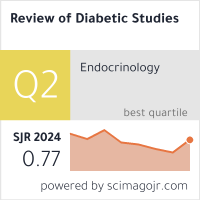Clinical Considerations In Pediatric Patients Undergoing Liver Transplantation With A Diagnosis Of Post-Transplant Lymphoproliferative Disease In A Latin American Fourth-Level Hospital: A Descriptive Observational Historical Cohort Study (2007-2020)
DOI:
https://doi.org/10.1900/ckqr3m35Keywords:
Liver transplant, Lymphoma, Post-transplant lymphoproliferative disorders, Epstein-Barr virus infectionAbstract
Purpose: Post-transplant lymphoproliferative disease (PTLD) encompasses a spectrum of lymphoproliferative syndromes that develop as complications following solid organ or hematopoietic cell transplantation, leading to liver involvement from 9.7% to 20% of pediatric cases. Its distribution exhibits a bimodal pattern, with a peak occurrence during the first-year post-transplant associated with primary Epstein-Barr virus (EBV) infection, followed by a second peak after 5 years attributed to other causes in 50% during this period.
Methods: A descriptive observational historical study was conducted on a cohort of patients under 18 years of age who underwent liver transplantation at Fundación Cardioinfantil – La Cardio (Bogotá, Colombia) between 2007 and 2020. Anthropometric variables, primary liver disease, donor type, serological status, immunosuppression regimen, clinical manifestations, PTLD subclassification, and other relevant factors were considered in the study.
Results: Out of the 216 cases examined, 18 (8.3%) were confirmed to have PTLD. Women accounted for 61.1% and the median age at the time of PTLD diagnosis was 2.68 years (IQR: 2.58 – 3.08). The primary cause of liver transplantation was biliary atresia in 83.3%, and living donors contributed 88.8% of transplanted organs. Active EBV infection was documented in only two recipients at the time of transplantation. During PTLD diagnosis, 88.8% of patients presented an alteration in EBV viral load. According to the 2017 WHO Classification of Tumors of Hematopoietic and Lymphoid Tissues, 12 cases were identified as Florid Follicular Hyperplasia and 6 cases as Monomorphic PTLD.
Conclusion: Data regarding the incidence and prevalence of PTLD following liver transplantation in Latin American children is limited; however, this study revealed prevalence rates comparable to those reported in the literature for other contexts. There is a pressing need for multicenter randomized clinical trials on a national and international scale. These trials would enable controlled exposure, offering more precise insights into the causal relationship and identification of triggering risk factors.


